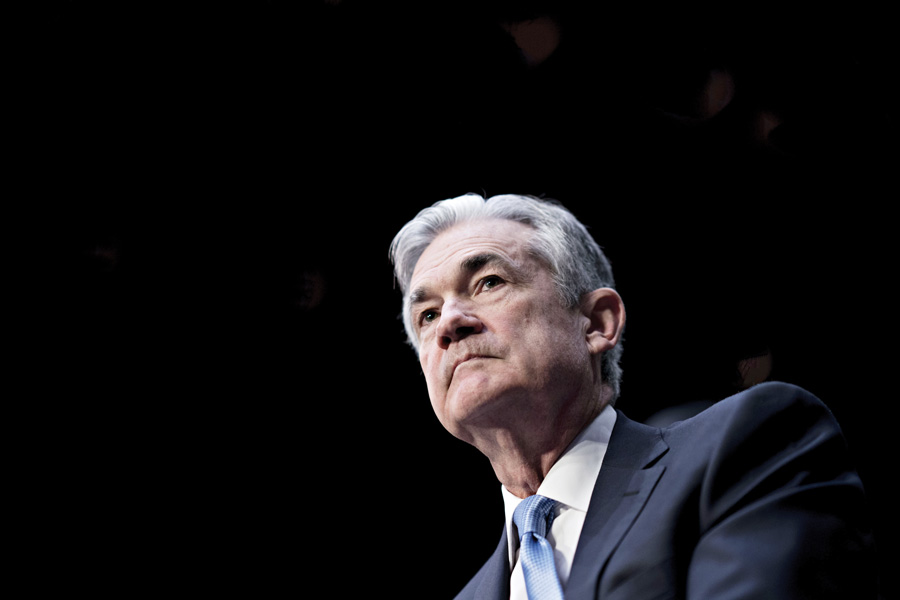

President Donald Trump last month added federal debt costs as a fresh reason why Jerome Powell should slash interest rates. But firing the Federal Reserve chair and forcing rates down wouldn’t help, a new analysis shows.
“Removing Powell won’t move the needle” on the Treasury Department’s debt-interest costs, Matthew Luzzetti, chief US economist for Deutsche Bank AG, wrote in a note Wednesday with strategists Matthew Raskin and Steven Zeng.
Trump has repeatedly called for the Fed to cut its benchmark rate, currently set at 4.25% to 4.5%, by some 3 percentage points. Speaking Tuesday during a meeting at the White House, he said that doing that, “with the striking of a pen, we would be saving more than $1 trillion.”
But removing Powell likely wouldn’t produce that sort of savings, in the Deutsche Bank team’s calculation. They extrapolated the market reaction seen during about an hour on July 16, when reports emerged that Trump was preparing to fire Powell, before he then said he had no such plan. While short-term Treasury yields fell, longer-term ones went up — fueled by concern that a more pliant Fed would mean higher inflation over time.
“Taking market moves at face value, we find that the cost savings from lower front-end yields would be largely offset by higher long-term yields,” Luzzetti, Raskin and Zeng wrote. “Specifically, the Treasury would only save” $12 billion to $15 billion through 2027 if the president fired Powell, they wrote.
The Treasury’s debt-servicing costs have soared since the Fed jacked up interest rates in 2022 to quell decades-high inflation. As older, low-interest securities mature and need to be replaced with new, higher-rate ones, that bill continues to climb. In the first nine months of the 2025 fiscal year, interest costs totalled $921 billion, up 6% from the year before.
Fed officials have held their benchmark rate unchanged this year while they wait to learn more about how Trump’s tariffs and other policies will affect inflation. Governor Christopher Waller last month highlighted that debt-interest costs aren’t a consideration for the central bank.
“Our mandate from Congress tells us to worry about unemployment and price stability,” Waller said during June 20 CNBC interview. “It does not tell us to provide cheap financing to the US government.”
The Deutsche Bank team assumed an additional 50 basis points of Fed rate cuts over time, compared with a baseline projection, in the event of Powell’s removal — again drawing on an analysis of the late-morning moves on July 16. If the Fed took its benchmark down to 1%, as Trump has suggested, that “possibly” could alter the conclusion, they wrote.
One scenario is that the more dramatic cuts could amplify the dynamics seen last week, “even resulting in increased costs.”
It’s also possible that even long-term yields could come down if investors price in a lower Fed benchmark rate for many years to come, they wrote. But that still wouldn’t lead to substantial savings on debt costs.
“The market’s response would depend on a number of factors that are highly uncertain” such as how long policymakers could stay dovish and how much extra inflation compensation investors demand, they said. “There is no structured way to calibrate this response” ahead of time, they said.
Penciling in a 50 basis point reduction in yields across the curve would bring cumulative debt-servicing costs down by $78 billion through 2027, Luzzetti, Raskin and Zeng calculated. That would still “not meaningfully change the debt landscape in the US.”
© 2025 Bloomberg L.P.

As SECURE 2.0 and state mandates drive micro 401(k) plan adoption, advisors are set to play a bigger role in helping small businesses navigate retirement solutions.

More than three-fifths of surveyed advisors see generative AI as an efficiency booster, though many are still concerned about data privacy and lack of tech integration.

The new offerings, including managed options on Franklin's canvas platform, come as managed account assets surge in the US to hit $13.7 trillion.

Meanwhile, Raymond James bolstered its employee advisor arm with an industry veteran who previously oversaw $750 million at Stifel.

Staffing shortfalls, new policies, and increased demand for clarity create potential speed bumps for tax planning and compliance.
Orion's Tom Wilson on delivering coordinated, high-touch service in a world where returns alone no longer set you apart.
Barely a decade old, registered index-linked annuities have quickly surged in popularity, thanks to their unique blend of protection and growth potential—an appealing option for investors looking to chart a steadier course through today's choppy market waters, says Myles Lambert, Brighthouse Financial.
